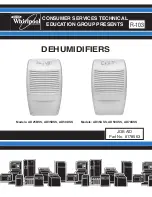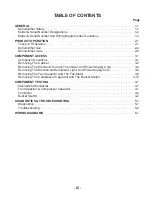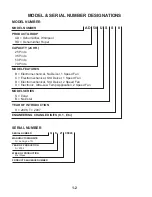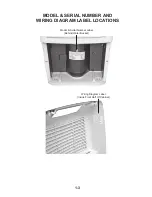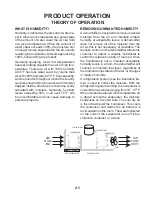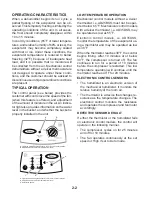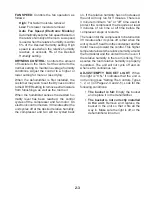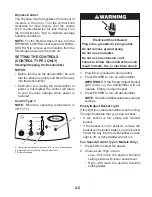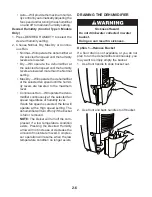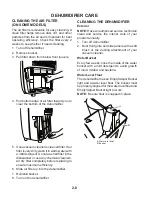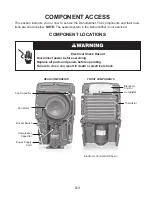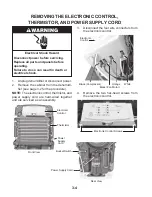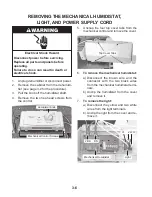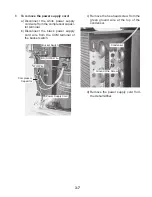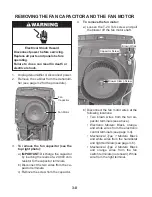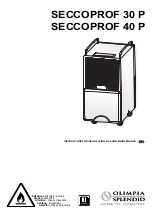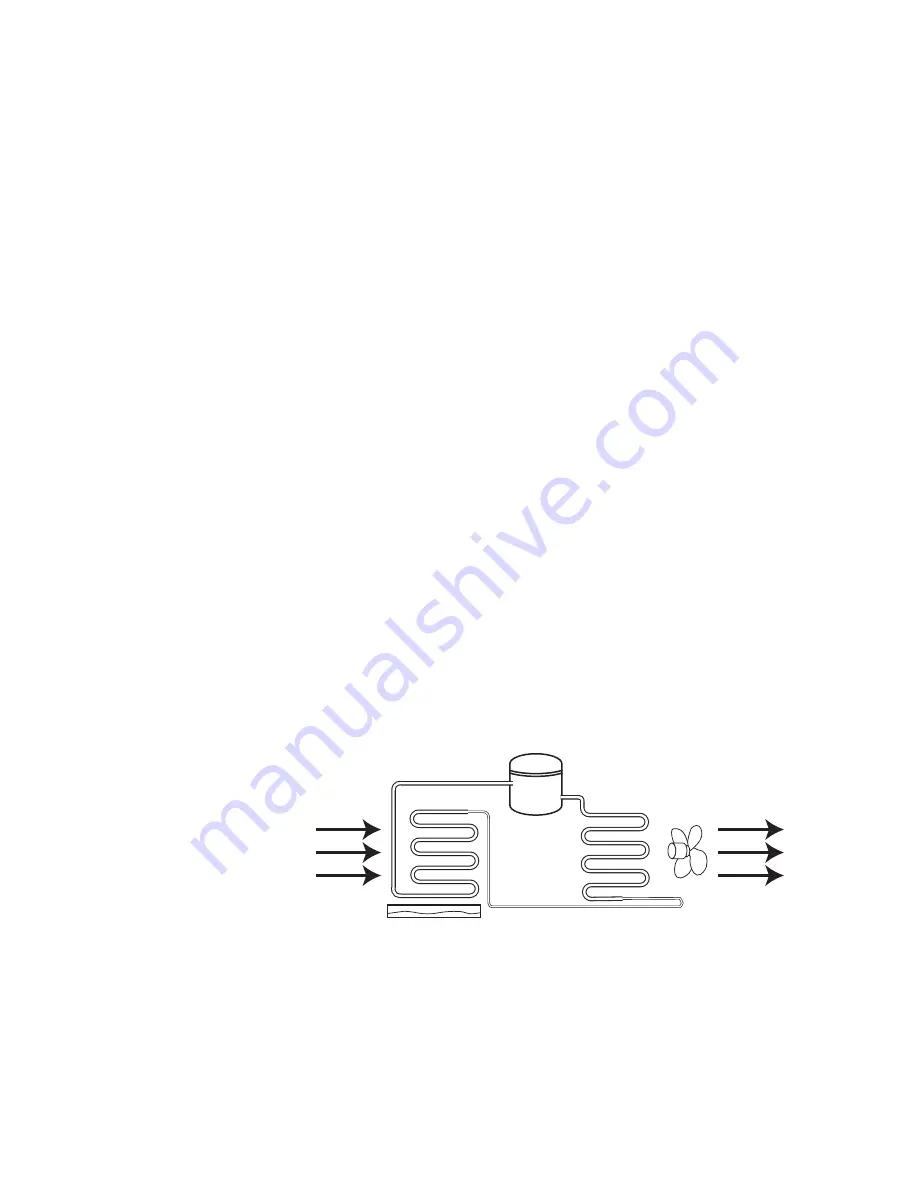
2-1
PRODUCT OPERATION
THEORY OF OPERATION
WHAT IS HUMIDITY?
Humidity is defined as the amount of water va-
por in the air and is measured as a percentage
of the amount of water vapor the air can hold
at a given temperature. When the amount of
water vapor exceeds 100%, the moisture can
no longer remain suspended in the air, usually
resulting in precipitation. At levels approaching
100%, mist and fog are present.
Generally speaking, air at low temperatures
has less holding capacity than air at high tem-
peratures. Therefore, air with 100% humidity
at 45
°
F has less water vapor by volume than
air with 100% humidity at 70
°
F. Consequently,
summer months throughout most of the country
can present a problem, because warm moist air
trapped inside a structure can become overly
saturated with moisture. Generally, humidity
levels exceeding 50% in air over 70
°
F, can
be uncomfortable and can cause damage to
personal property.
REMOVING UNWANTED HUMIDITY
A dehumidifier is designed to remove unwanted
moisture from the air and maintain relative
humidity at acceptable levels. A dehumidifier
does not remove all of the moisture from the
air, as this is not necessary, or desirable. The
dryness control on the dehumidifier allows the
customer to adjust a variable humidistat to
control the relative humidity of room air. Once
the humidistat is set to maintain acceptable
humidity levels in a room, the dehumidifier will
continue to maintain that level, regardless of
the ambient temperature of the air, or changes
in relative humidity
A refrigeration system (see the illustration be-
low) is used to collect the moisture. With the
refrigeration system working, the evaporator is
cooled to temperatures ranging from 33
°
- 37
°
F.
When moisture-ladened room temperature air
is drawn across the evaporator, the moisture
condenses on the cold coils. The cool dry air
is then drawn past the condenser. This cools
the condenser and warms the air before it is
recirculated into the room. The water collected
on the coils of the evaporator runs off into a
collection container, or a drain.
AIR
FLOW
(IN)
AIR
FLOW
(OUT)
SUCTION TUBE
EVAPORATOR
CAPILLARY TUBE
CONDENSER
COLLECTED WATER
DISCHARGE TUBE
FAN
Summary of Contents for AD25BSS
Page 4: ... iv NOTES ...
Page 8: ...1 4 NOTES ...
Page 28: ...3 12 NOTES ...
Page 33: ...6 1 WIRING DIAGRAM 1 WIRING DIAGRAMS ...
Page 34: ...6 2 WIRING DIAGRAM 2 ...
Page 35: ...6 3 WIRING DIAGRAM 3 ...
Page 36: ...6 4 NOTES ...
Page 37: ...6 5 NOTES ...
Page 38: ...6 6 NOTES ...
Page 40: ...CORPORATION ...

